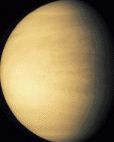

 |
 |
Galileo spacecraft and Hubble Space Telescope images.
Venus is the second closest planet to the Sun. It has no moon. It is the
closest in size to the Earth. From the Earth, the planet's surface is never
seen, as it is always covered by very dense layers of clouds.
Through a small telescope Venus can be easily seen to have phases, like the
Moon. It is very unusual for any details to be visible in the cloud
structures, except for the most practiced observers.
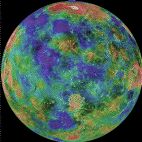 |
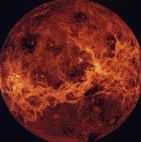 |
 |
Images from Magellan orbiter's data.
The most modern information about the surface comes from the Magellan Venus orbiter. This uses radar to map the surface. It has revealed mountains, valleys, cliffs, craters and huge volcanoes, at least one of which is believed to be active.
 |
 |
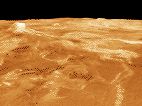 |
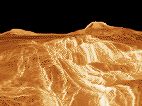 |
Lakshmi Planum, Gula Mons and Crater Cunitz, Eistla Regio, Eistla Regio - Rift Valley.
 |
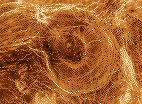 |
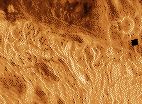 |
 |
 |
Arachnoids, Alpha Regio, Parallel Lines.
Venus has an atmosphere which, at the surface, has a pressure 90 times that
of the Earth's.
Unlike the Earth's atmosphere, which is mainly composed of nitrogen and
oxygen, Venus's atmosphere is made up of 97% carbon dioxide.
One consequence of the preponderance of carbon dioxide in the atmosphere is
that Venus suffers from the severe effects of the 'greenhouse effect'.
Thus, the surface of Venus is heated to a temperature of 470°C.
The clouds in the atmosphere of Venus, which obscure our view of the surface,
are not composed of water droplets, as on the Earth, but are believed to be
composed of droplets of sulphuric acid and particles of sulphur!
Image Credits: NASA/JPL
Caption Credits: Royal Greenwich Observatory Leaflets
These pictures' originals, excellent background texts, and larger versions of these and many other photographs of our Solar System are available at Views of the Solar System by Calvin J. Hamilton.
Updated: April 29 '97
Best seen with MS Internet Explorer.
For background text, link to the RGO Leaflets in ARVAL - Venus
Back: ARVAL Gallery Venus
Messages: